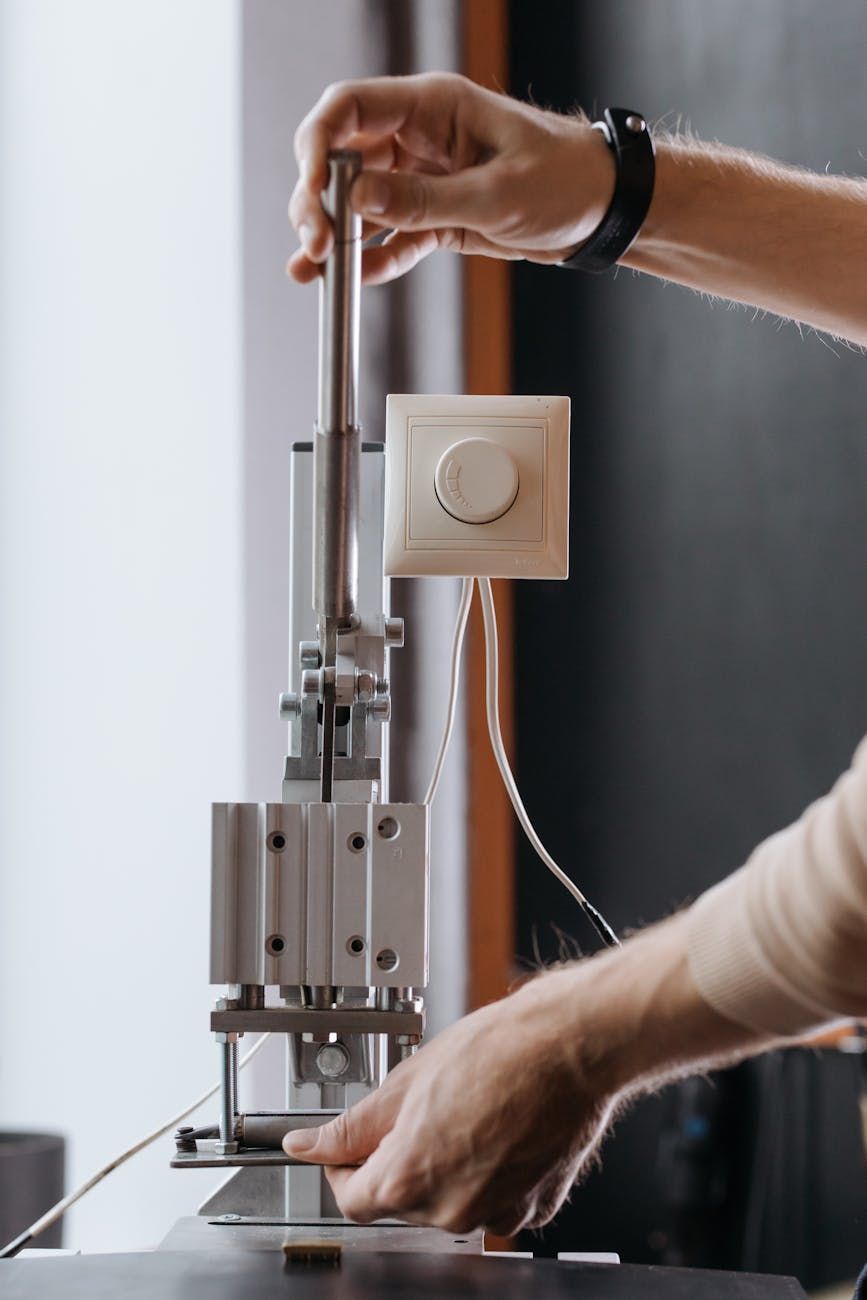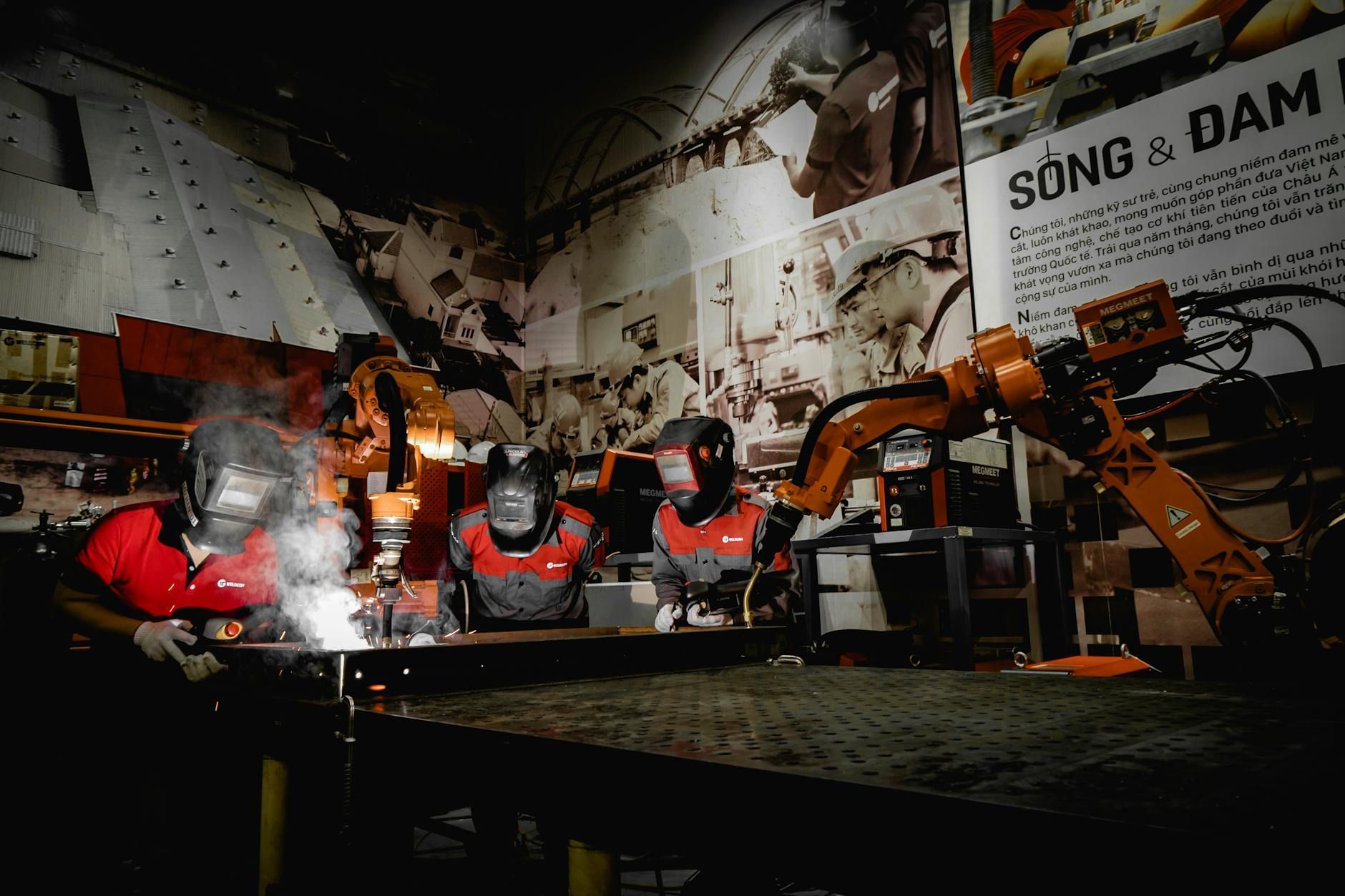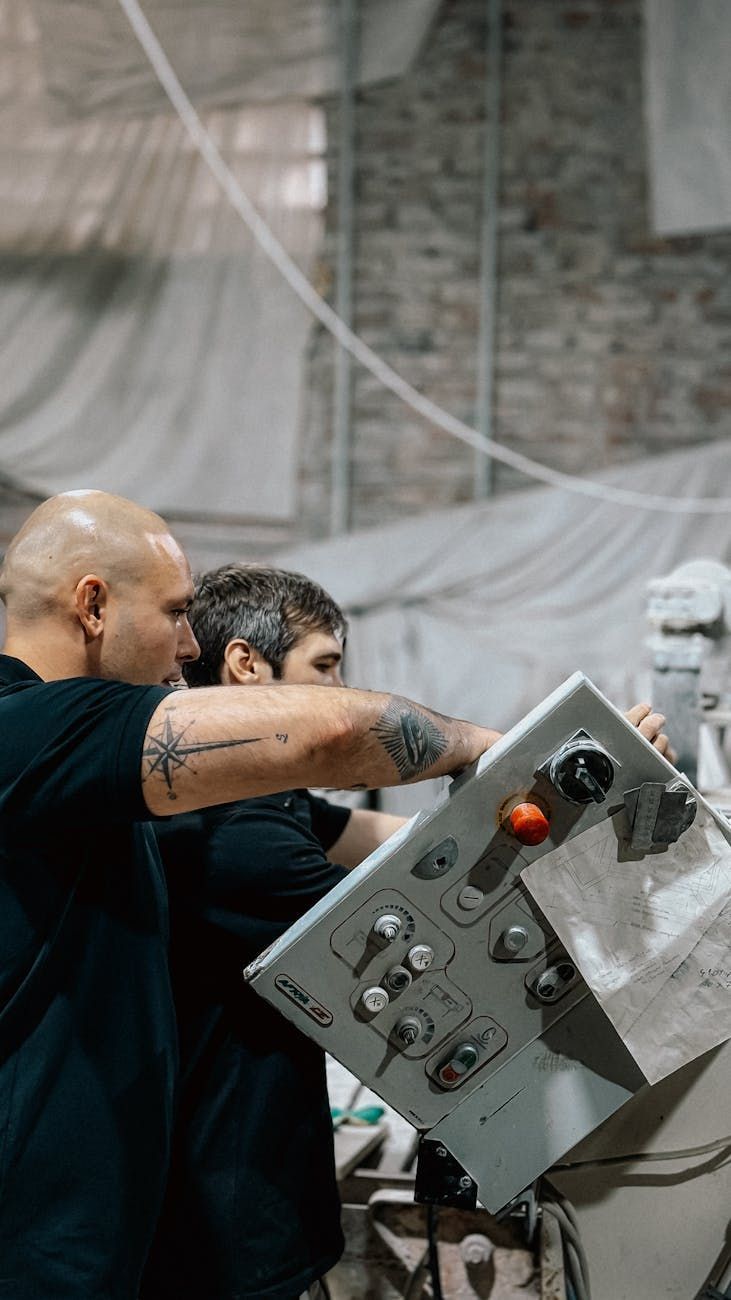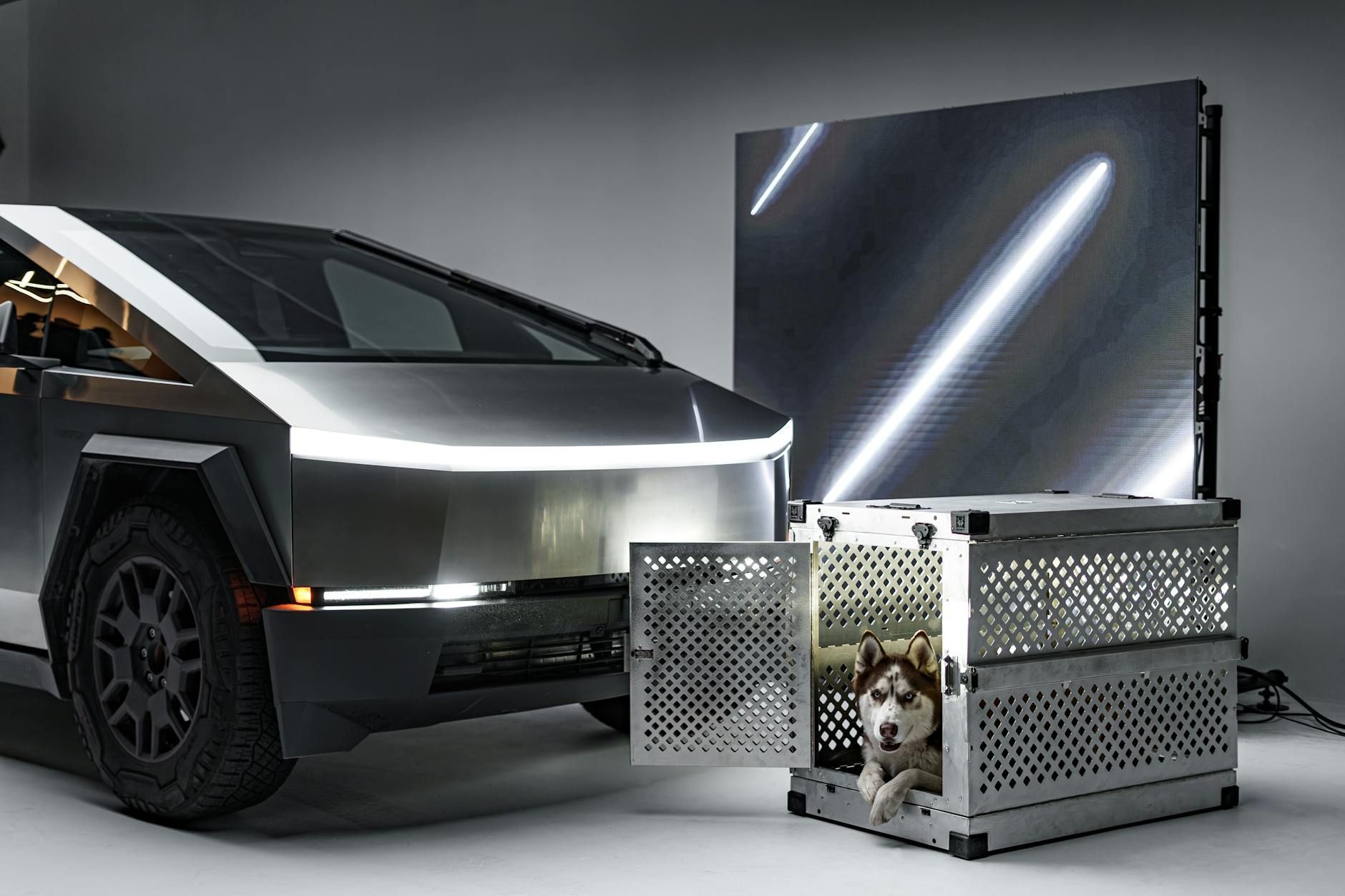Strong Wealth Solutions
The Future is Here: Embrace Human-Robot Collaboration Today
Are you ready to embrace human-robot collaboration in your organization? From automated manufacturing lines to interactive chatbots that handle client queries, teaming up with robots has never been more accessible. You can already see it in action on factory floors, in hospitals, and even in customer service departments. By blending human creativity with robotic precision, you’ll amplify productivity, streamline workflows, and stay steps ahead of your competition.
Maybe you’ve been curious about how robots can fit alongside your teams without displacing the people who are already experts in their roles. That’s the big question: can machines and humans truly work side by side without missing a beat? The answer is a firm yes. With advances in technology, collaborative robots (often called cobots), AI-driven automation tools, and intuitive exoskeletons are showing up across industries. These innovations secure a future for businesses like yours—one in which people do what they do best, and machines handle the rest. When implemented thoughtfully, these partnerships can relieve staff from tedious tasks, enhance safety, and free up your teams to focus on higher-level strategy.
Still, it’s normal to wonder whether this strategy might be too complex or costly. After all, new technology can sometimes bring new headaches. But that’s precisely why the right support matters. When you partner with a solution like Humanoid as a Service (HaaS), you get guidance on selecting and deploying the automation methods that work best for your unique needs. If you want a taste of what’s possible, this roundup will walk you through ten ways to tap into robotics. Each example highlights a real-world approach to collaboration, helping you spot the ideal place to start.
Below, you’ll explore everything from cobots that can safely work alongside people on busy production lines, to exoskeleton devices that reduce strain for warehouse employees. Along the way, we’ll discuss how robotic process automation might be the spark that sets your administrative tasks on autopilot. Ready to see what these solutions can do for your business? Let’s dive into a closer look at the top ways executives like you are harnessing this blend of human and machine power.
Adopt cobots for efficiency
Cobots—short for collaborative robots—are designed to team up with humans in the same workspace, often undertaking repetitive or physically demanding tasks. But how exactly do they differ from classic industrial robots? Traditional robots usually operate behind protective barriers for safety. Cobots, on the other hand, come equipped with advanced sensors that allow them to slow down or stop when a person enters their immediate work zone. This makes them ideal for environments where flexible processes are the norm, like manufacturing facilities that handle varying product lines or small production batches.
Why cobots increase agility
You might be thinking: “Is it really worthwhile to integrate cobots if I already have automated machinery in place?” Absolutely. Cobots shine where adaptability is crucial. If your facility experiences frequent product changes, you can reprogram a cobot with relatively little downtime—often without needing deep coding knowledge. That agility means you can meet shifting market demands without enduring a significant overhead for retooling or retraining.
- Sensors that detect human presence help maintain safety.
- Straightforward interfaces allow rapid repurposing between tasks.
- Smaller footprints than traditional robots free up floor space.
Real-world example
Imagine a packaging warehouse that processes an ever-growing variety of SKUs. One week, your line might focus on coffee makers, the next on bulk snack boxes. A cobot can be trained to carefully pick and place items into shipping cartons, then reconfigured for new product dimensions overnight. Production keeps humming, and your human staff can handle organizational tasks—like tracking shipments and coordinating schedules—rather than monotonous packing.
By using cobots, you mix the reliability of a machine with the nuance and adaptability of human intelligence. This synergy can accelerate throughput, reduce repetitive-strain injuries, and help your workforce focus on more creative or value-adding activities.
Use exoskeletons for support
When you heard “exoskeleton,” you might have pictured sci-fi suits that let you lift heavy boulders without breaking a sweat. Today’s reality might be less dramatic, but these wearable devices are already making a real impact on the shop floor. Whether you run a warehouse or a manufacturing plant, an ergonomic exoskeleton can offer back support, reduce muscle strain, and help avert workplace injuries over the long haul.
How exoskeletons improve safety
If your teams regularly lift heavy objects or maintain awkward postures—think overhead assembly lines or picking stock from high shelves—exoskeletons can serve as a literal backbone. They distribute load more evenly across the body and often reduce force needed for certain motions. The result is improved endurance, lower risk of musculoskeletal disorders, and potentially fewer claims related to on-the-job injuries.
- Light yet durable materials promote mobility.
- Adjustable straps fit a range of body shapes.
- Integrated sensors can interpret posture and adapt support.
Where exoskeletons fit best
Consider a distribution center that manages constant incoming and outgoing stock. By outfitting your team with wearable exoskeletons, you spare them from back strain while keeping line speeds robust. And it’s not just about brute force. Even tasks like repetitive arm lifts above the shoulders—say, reaching for parts on an assembly line—become easier to handle.
Before you worry about budget, know that the technology has evolved rapidly, and that’s driven costs down over the past few years. You don’t need to equip every worker right away, either. A pilot program focusing on the tasks most prone to chronic injuries can serve as proof of concept. That helps earn buy-in from employees and decision-makers alike, giving everyone a chance to see how wearable robotics elevate well-being without sacrificing workflow efficiency.
Enhance service with chatbots
Customer service is a space where human-robot collaboration often happens invisibly. AI-based chatbots can deal with common customer questions, from shipping details to account queries. That frees up your people to handle more complex or sensitive issues. Think of it this way: while the chatbot answers the routine “Where’s my package?” question, your staff focuses on personalizing interactions for high-value clients who might need specialized knowledge or empathy.
Why chatbots work
Perhaps you’re skeptical because you’ve dealt with clunky, unhelpful chatbots yourself. In recent years, however, these systems have gotten smarter. They use natural language processing (NLP) and machine learning to recognize intent and escalate urgent or unusual queries to human agents in real time. This fusion blends speed and cost-effectiveness with the warmth only a human can provide.
- 24/7 availability reduces wait times.
- Automated language translation broadens global outreach.
- Instant data retrieval quickens the resolution process.
Blending chatbots and people
A chatbot can share conversation logs with your human support agents. So when a request escalates, your rep jumps in knowing what’s already been said. This continuity makes the user experience smoother. Plus, chatbots can highlight relevant internal knowledge base articles, letting your service staff focus on the emotional side of service—reassuring a frustrated user or clarifying a policy. In many ways, it’s the best of both worlds: technology tackles routine queries, while humans take on the tasks that truly need that personal touch.
Refine tasks through RPA
You’ve probably heard of robotic process automation before. In essence, it’s software that mimics human actions on a computer—like copying data from one field to another or clicking through forms. Where does that fit into human-robot collaboration? RPA is like having a digital assistant who focuses on repetitive data work, so you and your team can concentrate on more dynamic challenges.
Working with RPA systems
Let’s say you run a financial institution that processes loan applications. Traditionally, an employee might waste hours cross-checking applicant details with various databases. With robotic process automation , you can configure a software bot to do that grunt work. Meanwhile, your employee can interpret the data for risk or compliance issues and provide that all-important human judgment in borderline cases.
- Reduced manual errors boost data quality.
- Faster workflows slash turnaround times for clients.
- Straightforward configuration allows scaling.
Getting started with RPA
Can it handle complex tasks? In many cases, yes. Modern RPA solutions can integrate with different software systems, pulling data from your CRM, financial modules, or even email threads. The payoff? Fewer backlogs, quicker decisions, and employees who aren’t stuck doing data entry. If you’re looking for that first step into automation with minimal infrastructure changes, RPA might be your quiet hero.
Elevate healthcare interactions
In healthcare, you might wonder whether substituting robots for human caregivers is a bridge too far. But it’s not about replacement. Instead, it’s about letting robots manage the heavy lifting or logistical tasks so nurses and doctors can spend more quality time with patients. Telemedicine robots, for instance, can facilitate remote consultations. Meanwhile, surgical robots bring painstaking precision to complex procedures, all under the guidance of skilled surgeons.
Examples that benefit patients
One hospital might employ small autonomous robots to move supplies between departments. Another integrates robotic arms that assist surgeons with delicate maneuvers. In each scenario, you see a mutual benefit: the work gets done more accurately or consistently, while medical professionals gain time for empathy and expert decisions.
- Automated medication dispensers reduce dosage errors.
- Robotic companions offer social engagement for isolated patients.
- AI-assisted triage, combined with nurses’ expertise, boosts efficiency.
Keeping the human touch
Nothing replaces genuine doctor-patient interaction. A surgeon controlling a robotic arm can perform more precise operations while maintaining oversight of the entire procedure. For routine hospital tasks—wheeling around medication carts, say—robots free nurses from basic errands, so they can build deeper relationships with patients. The result is often lower stress for medical teams and better patient satisfaction, proving human-robot collaboration can enhance the most human-centric of professions.
Transform hospitality roles
Guest experiences in hotels and restaurants are incredibly personal. You might doubt that automation can enhance that feeling. But the right approach can boost consistency without making interactions feel cold. For instance, some hotels employ robotic concierges that handle check-ins or deliver towels to rooms. This can leave human staff free to greet guests warmly, upsell amenities, or handle special requests that require a personal touch.
Making guests feel special
If your front desk team spends half their time juggling paperwork, you lose chances to engage guests directly. Automated kiosks and service robots can reduce wait times for standard check-in tasks, letting staff focus on anticipating needs. That might mean providing local recommendations or solving issues quickly for VIP visitors.
- Contactless check-in offers a sense of safety and efficiency.
- Robotic runners reduce foot traffic in busy hallways.
- Staff has more bandwidth for high-impact guest interactions.
Where managers see ROI
You might wonder if guests would find it impersonal. But in many scenarios, novelty adds to the experience. People enjoy seeing a sleek robot deliver room service. It’s a conversation starter that also lowers labor costs for repetitive tasks. Meanwhile, by reassigning staff to more interactive roles, you can differentiate your brand. The result? A hotel or restaurant that runs like clockwork, with a friendly human face always ready for genuine engagement.
Supercharge retail fulfillment
In an era when delayed shipping can mean lost customers, efficient retail and eCommerce fulfillment is critical. That’s where pick-and-place robots, automated guided vehicles (AGVs), and sorting systems step in. These tools are now more affordable and adaptable, letting you optimize everything from receiving inventory to final dispatch. You might already have employees scanning items or organizing shelves. Give them a robotic helper, and you can handle higher volumes while reducing errors.
Balancing people and robots
Rather than eliminating warehouse jobs, many retailers adopt human-robot teams that manage the surge in online orders—especially during peak seasons. For tasks like scanning product codes or quickly ferrying packages across aisles, robots excel at speed. Meanwhile, employees can orchestrate the flow, deal with exceptions, and ensure everything is packed securely before shipping.
- Automated guided vehicles (AGVs) streamline goods movement.
- Intelligent sensors reduce mispicks in busy aisles.
- Real-time data tracking improves inventory visibility.
A typical workflow
Picture employees at a packing station. When demand spikes, an AGV automatically delivers pallets of goods. A pick robot places items in the correct bin. Human workers then verify orders, add personal touches like thank-you notes, and handle any special packaging instructions. The result? A hybrid workflow that capitalizes on speed and accuracy without losing the personal flair that sets your brand apart.
Improve safety in construction
Construction might not be the first place you envision human-robot collaboration, but it’s happening. Self-driving vehicles transport bulk materials, robotic arms lay bricks, and drones conduct site inspections or surveys. Bringing robotics into a construction zone can slash risks for workers and help projects run on schedule.
Why construction needs automation
High altitudes, heavy loads, and unpredictable weather make construction sites prone to accidents. By delegating the most hazardous tasks to robots—such as working at extreme heights or handling toxic materials—you protect your crew. Robots can also gather actionable data in real time. For instance, a drone can quickly assess if a structure’s foundation remains stable following heavy rain, giving engineers immediate information to guide decisions.
- Drones can map large areas quickly.
- Bricklaying robots maintain consistent quality.
- Autonomous vehicles reduce collisions on busy sites.
Partnering for success
Naturally, your skilled craftspeople remain vital for intricate work and real-time judgment. Robots handle repetitive or dangerous tasks, freeing people to concentrate on design details, craftsmanship, and project management. In this way, construction managers benefit from fewer delays, smaller safety incidents, and improved build quality. If you’re aiming to deliver projects on time and on budget, leveraging human-robot synergy could become a cornerstone of your future sites.
Deploy drones for inspections
Ever thought about how inspections might grow simpler if you weren’t relying on harnesses and scaffolding? Drones can enter tight or unsafe spaces, collect high-resolution images, and feed data back so employees can analyze the findings comfortably on the ground. This approach saves time and often yields more thorough results, making your overall workflow faster and more accurate.
Industries that benefit
If you operate in energy, telecom, or infrastructure, you know that consistent maintenance and inspections are essential to keep your operations safe and reliable. Checking wind turbines or power lines typically involves physically climbing to precarious heights. With a drone, you minimize risk and gather digital data that you can examine in detail. By combining your employees’ domain expertise with the drone’s vantage point, you enhance both safety and accuracy.
- Drone cameras capture details invisible to the naked eye.
- Real-time streaming supports remote collaboration.
- Swarm technology covers large area inspections quickly.
Analyzing and acting
Drones generate visual and sometimes infrared or thermal data. Your staff can then sift through these insights to spot faults, inefficiencies, or minor damage before it escalates. No more guesswork or risky climbs—just a seamless blend of machine accuracy and human oversight. It all contributes to a safer environment, fewer shutdowns, and more informed decisions.
Optimize agriculture workflows
Farming might be one of humanity’s oldest pursuits, but robotics are giving it a modern twist. Autonomous tractors, harvest drones, and planting bots can help your agricultural operation boost yields while respecting resources. By letting machines perform repetitive tasks, farmers can reallocate their time to monitoring soil quality, perfecting irrigation schedules, or trying new crop varieties.
Automation in the field
Picture a lightweight mobile robot rolling through rows of lettuce, using machine vision to identify which ones need weeding. Instead of spraying every row with herbicides or manually plucking weeds, the robot zeroes in on the right spots. Your team gains efficiency, and you reduce chemical usage, leading to cost savings and potentially healthier produce.
- Precision seeding improves crop density.
- Automated irrigation cuts water waste.
- Data reports on soil or weather patterns guide planting decisions.
More than just machinery
Agriculture robots depend on your hands-on knowledge. They can track growth patterns, but farmers have a nuanced understanding of microclimates, soil composition, and local market demands. When you combine your expertise with the raw speed and consistency of a robot, you optimize yields and create a sustainable path forward.
Your roadmap to implementation
After exploring these ten examples, you might be buzzing with ideas about where to begin. Indeed, human-robot collaboration is reshaping nearly every industry, from agriculture to healthcare. But how do you align these innovations with your overall strategy? The key is to start with well-defined goals. Do you want to accelerate production, enhance customer satisfaction, or take repetitive tasks off your staff’s plates? Clarifying these objectives will help you pick the right combination of tools or programs to get the job done efficiently.
Suggested implementation steps
- Identify the biggest pain points in your workflow.
- Scope out technology solutions relevant to those pain points.
- Conduct a pilot project keeping objectives and ROI metrics in mind.
- Gather feedback from end users to refine your setup.
- Scale up once you see proven value that meets your goals.
If you haven’t quite pinned down the details, an experienced partner can make all the difference. That’s where Humanoid as a Service (HaaS) comes in. Whether you’re exploring cobots, exoskeletons, or an entirely different automation route, HaaS can help you chart the right path. By focusing on your unique business needs, you set yourself up for a future where human intelligence meets robotic efficiency in the ideal balance.
Integrating people for success
Human-robot teams work best when your staff understands and embraces the changes. This means investing in training, from learning how to operate or troubleshoot new automation tools to revising workflows for maximum synergy. It’s natural for employees to feel apprehensive at first, especially if they worry about job security. Clear communication about how these technologies simplify day-to-day tasks and open the door for professional growth can ease many of those concerns.
Creating a learning culture
- Offer hands-on training sessions and digital tutorials.
- Implement a buddy system where experienced users help new adopters.
- Recognize early adopters and champions who share success stories.
By encouraging constant upskilling and acknowledging your team’s input, you transform potential resistance into excitement. People appreciate technology that improves their work conditions, whether it’s an exoskeleton saving their back or a drone streamlining an inspection route. Demonstrate respect for your workforce, and they’ll reciprocate the enthusiasm for new systems.
Tracking outcomes and refining
Just like any project, continuous improvement is essential. Once you roll out a particular solution, track relevant metrics—production speed, error rates, workplace injuries, or customer satisfaction. Evaluate whether you’ve met your primary objectives and consider fine-tuning if you haven’t. Maybe your pick-and-place cobot could handle a wider variety of packaging tasks. Perhaps your AI chatbot needs more training data to accurately field queries in multiple languages. These tweaks can make a world of difference.
Ask yourself
- Are we optimizing performance, or have we simply replaced manual tasks?
- What feedback loops exist for employee and customer input?
- Is our new workflow truly a better experience for everyone?
Answering these questions can help you sharpen your approach to automation. An effective human-robot collaboration plan isn’t static. It evolves as your business grows, your market shifts, and technology advances. In essence, your partnership with robotics is a journey toward constant progress, not a one-time fix.
Secure a consultation
You’ve seen the broad range of opportunities—from chatbots that handle late-night customer inquiries to exoskeletons that reduce workplace injuries. Now it’s your turn to explore how best to integrate these ideas into your business in a way that benefits your bottom line and your workforce.
If you’re ready to cut down on repetitive tasks or boost your market advantage, you aren’t alone. That’s exactly why Humanoid as a Service (HaaS) exists: to guide you step by step, ensuring you get precisely the solution you need without overcomplicating the process. There’s no need to guess which tool might be the right fit. We’ll help you assess your unique situation, recommend suitable automation strategies, and show you how to implement them for maximum return.
Ready to learn more? Book a free consultation or Get started here: https://www.humanoidasaservice.com/get-started. With robust guidance and a clear plan, you’re well on your way to building a workplace where humans and robots thrive side by side. By laying that foundation now, you set yourself up for a more efficient, innovative, and future-ready business—one that not only embraces progress but leads the charge.
SHARE THIS POST:
Leave A Comments:
Our Recent Posts:
Transform Your Workforce
Experience the future of work today. Book a pilot project or demo to see how humanoid automation can elevate your operations.








